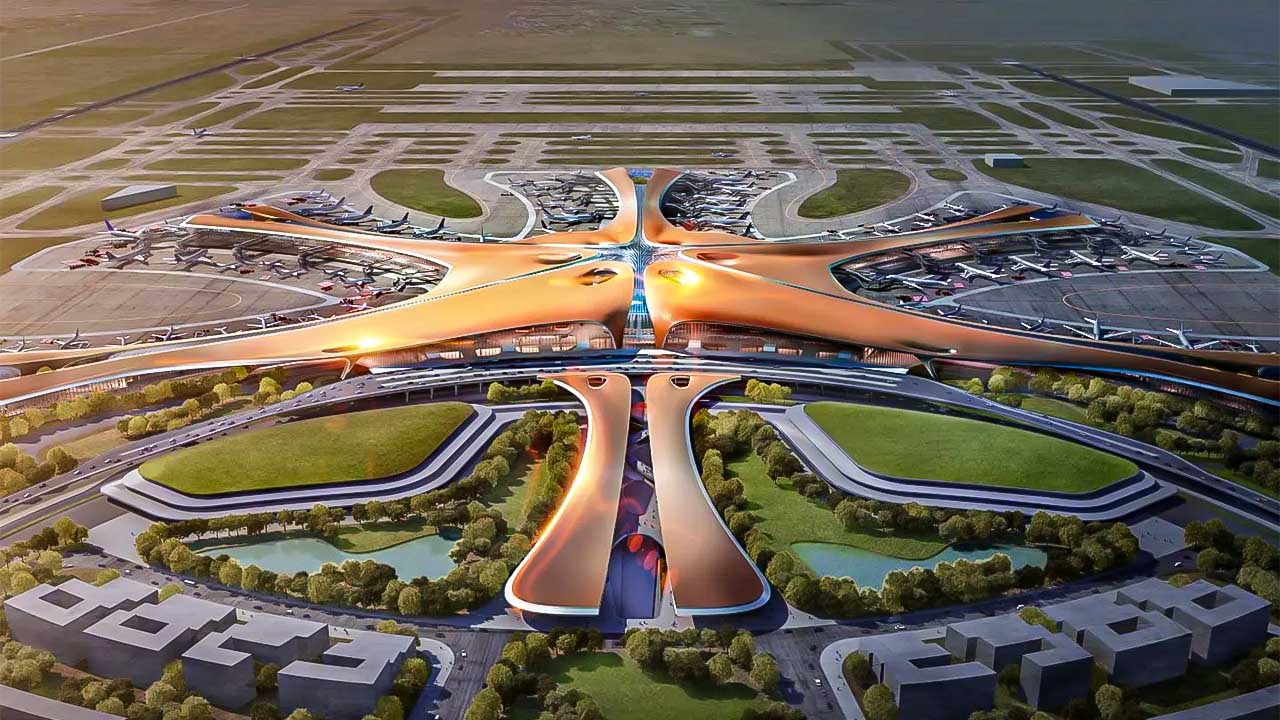The long-awaited Navi Mumbai International Airport (NMIA) is finally nearing its operational phase, promising to ease congestion at the city’s overburdened Chhatrapati Shivaji Maharaj International Airport (CSMIA). Touted as one of India’s most ambitious infrastructure projects, NMIA is expected to transform Mumbai’s aviation landscape. Yet, despite its modern facilities and large capacity, the new airport faces significant hurdles—chief among them, connectivity.
Mumbai’s Overloaded Airport System
For first-time travelers, flying into Mumbai can be overwhelming. The city’s existing airport, surrounded by dense housing colonies and Asia’s largest slum, has long operated under extreme constraints. With intersecting runways, limited expansion room, and increasing air traffic, the airport has already hit its peak capacity of 55 million passengers annually.
According to aviation experts, the lack of space and safety restrictions has forced authorities to fast-track a second international airport. NMIA, spread across 1,100 hectares and located around 40 kilometers from South Mumbai, is designed to handle growing passenger numbers while reducing air traffic pressure.
A Game-Changer for Indian Aviation

Developed by Adani Airport Holdings Limited, NMIA is expected to redefine the region’s aviation capacity. The airport will initially operate two parallel runways, with long-term plans for four terminals capable of handling 90 million passengers annually.
Experts believe NMIA will make Mumbai the first Indian metro city to operate dual airports, a status enjoyed by leading cities such as New York, London, and Dubai.
India’s Aviation Boom
India’s aviation sector has witnessed rapid expansion in recent years, recording double-digit growth and outpacing many global regions. Domestic airlines have already placed orders for nearly 1,900 new aircraft, half of which are scheduled to arrive within the next five years.
To support this surge, NMIA will become India’s first fully digital airport, leveraging advanced technologies for check-in, baggage handling, security, and boarding. This modernization is expected to cut turnaround times and streamline passenger movement.
Several major carriers—including IndiGo, Akasa Air, and Air India—have announced new routes from NMIA. Air India has confirmed flights to 15 cities initially, with plans to expand to international destinations.
Connectivity: The Biggest Obstacle

Despite its advanced infrastructure, NMIA’s biggest challenge lies in accessibility. For passengers traveling from Mumbai’s northern suburbs, reaching the airport could take up to three hours by road.
A 20-minute direct metro link between CSMIA and NMIA is under construction but will not be ready for several years. Until then, the airport operator plans to run electric shuttle buses to help passengers connect between the two airports.
Policy and Regulatory Hurdles
Beyond physical access, experts argue that India’s aviation regulations also need reform. Unlike global hubs such as Singapore or Dubai, Indian airports require passengers transferring from domestic to international flights (or vice versa) to undergo security screening again, creating delays.
Competing with Global Hubs
While NMIA is technologically advanced, matching the global connectivity of Singapore’s Changi Airport or Dubai International Airport will require more than just infrastructure. Airlines will need to expand long-haul services and align fleet strategies to take advantage of Mumbai’s prime geographical location—between Asia, Europe, and the United States.
Bansal acknowledges this, stating that regulatory reforms and airline partnerships will be critical in shaping NMIA’s role as a true global hub.
A Step Toward the Future
For now, NMIA primarily addresses Mumbai’s most pressing problem—air traffic congestion. The airport is also expected to serve neighboring regions, including Pune, a major IT and education hub.
Industry analysts point out that most global megacities operate multiple airports to cater to rising passenger traffic. With NMIA, Mumbai joins the ranks of cities such as Tokyo, London, and New York. Meanwhile, Delhi is also preparing for the launch of Jewar Airport, which will serve as the capital’s third aviation gateway.
Conclusion
The opening of Navi Mumbai International Airport marks a significant milestone in India’s aviation journey. While its state-of-the-art infrastructure positions it as a potential global hub, challenges related to connectivity and regulatory processes could hinder its immediate success.
If authorities manage to address these gaps, NMIA could not only ease Mumbai’s chronic air congestion but also elevate India’s status on the global aviation map.

